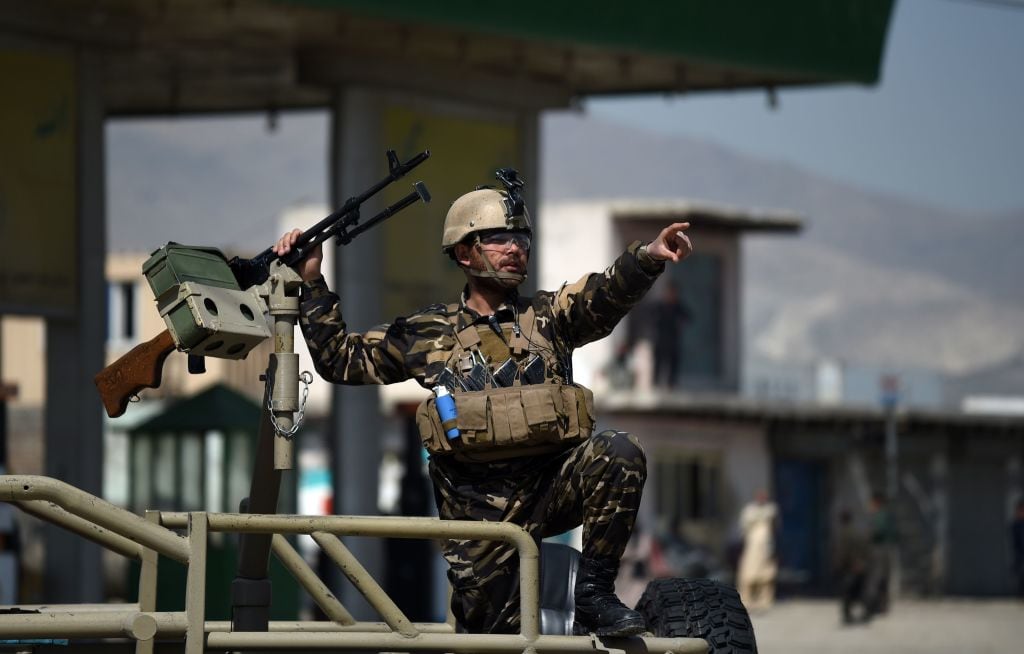Military policy requires an individual to be at least 17 years old — with parental consent — to enlist in any branch of the armed forces.
So, while the nation commemorates the 17th anniversary of one of the worst days in U.S. history, today also marks the first day that someone born on or after Sept. 11, 2001, can enlist to fight in the seemingly eternal war the tragedy spawned.
Nearly 7,000 service members have been killed in the war on terror, and just last year, the annual total of war zone deaths climbed for the first time in six years as the U.S. increased its footprint in Africa, continued its support of operations in Syria and Iraq, and maintained a presence of 14,000 troops in Afghanistan.
RELATED

One outcome of the 17-year conflict, aside from the inevitable frustration that comes from fighting a prolonged stalemate which seems to yield more cliches than tangible results (“Mission Accomplished,” “turned the corner,” “pivot,” etc.), has been the public’s waning interest in military service.
A recently published report by the Office of People Analytics designed to gauge the appeal of military service among 16- to 21-year-olds shows that, as of fall 2017, interest in joining the military is at its lowest point in 10 years.
Staff Sgt. Kirk Wagner, a Marine Corps recruiter, told Military Times the perpetual conflict presents recruiting challenges the military has never had to deal with before.
The war is "a big sticking point,” Wagner said. “A lot of families, that’s all they know of the Marine Corps. So, we try to get out there and promote, you know, yes, we were at war for 17 years. Yes, the Marine Corps did what America needed it to do. However ... we do a lot of humanitarian missions.”
Finding other angles to promote military service is extraordinarily difficult with the ever-present elephant in the room. Data compiled in this poll of nearly 5,000 respondents reinforce just how tough of a sell the military currently is.
Public interest in military service surged following 9/11 and at the genesis of the Iraq war. Nearly a quarter of all young men polled following the attacks indicated that a future of military service was likely. That number stood at only 15 percent last fall, while women in this age bracket reported just a 7 percent likelihood that they would join the military’s ranks.
Numbers broken down by age, meanwhile, show that current interest in military service plummets between the ages of 16 and 19, with 17 percent of 16-year-olds reportedly considering enlistment, compared to just 7 percent of 19-year-olds.
In terms of race and ethnicity, nearly 20 percent of African Americans in the aforementioned age bracket consider military service likely, compared to 14 percent of Hispanics, 8 percent of whites and 8 percent of Asians.
The Army, Navy and Air Force drew the most interest in the fall 2017 data, with 7 percent of respondents indicating those branches would be their likely destination. The Marine Corps, meanwhile, was chosen by 5 percent. Interest in joining the Marine Corps surged to 10 percent following the invasion of Iraq in 2003.
Additional analysis in the report breaks down military interest based on other factors such as economic conditions, parental influence, ability to find a job, educational opportunities and more.
No matter how the numbers are broken down, however, they universally paint a dire picture of a military struggling to appeal to its most significant target demographic.
The lack of tangible progress over the course of 17 years is spreading war fatigue like wildfire.
Army Col. Rob Manning, a Pentagon spokesman, recently said officials believe “chaos and progress can coexist” in war-torn Afghanistan.
“That’s exactly what we feel is happening," he said.
It appears much of the rest of the country disagrees.
J.D. Simkins is the executive editor of Military Times and Defense News, and a Marine Corps veteran of the Iraq War.



